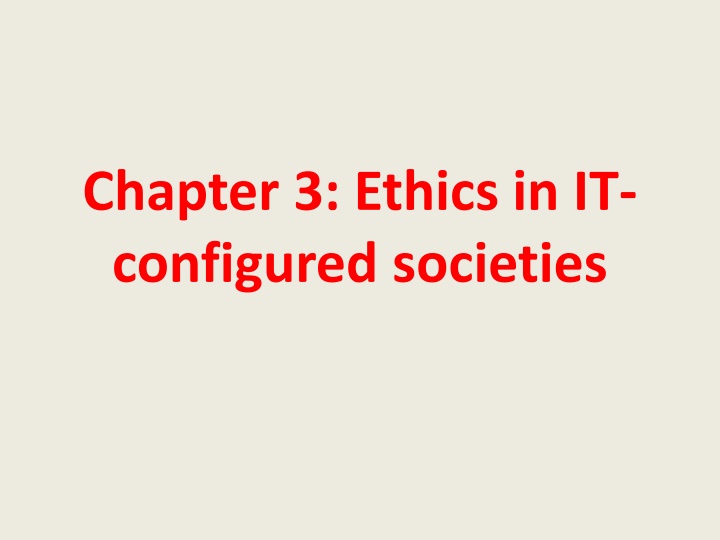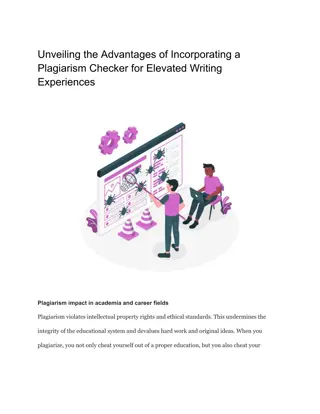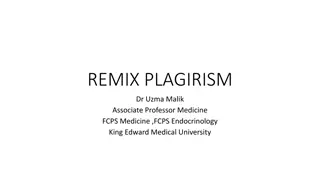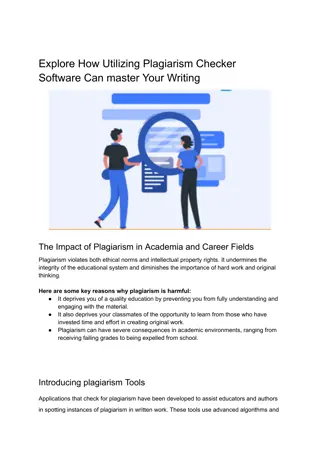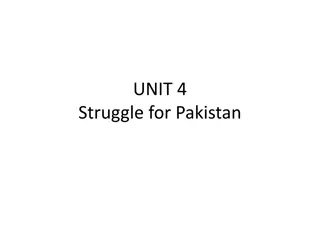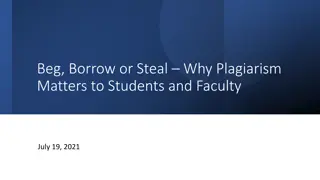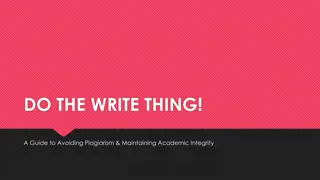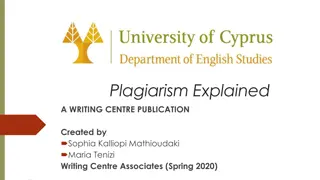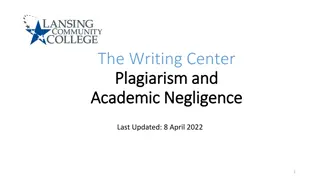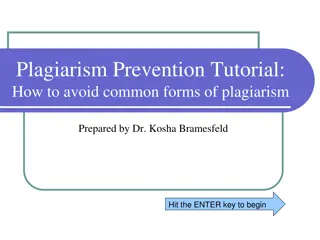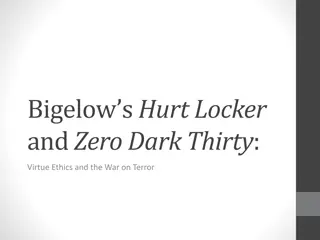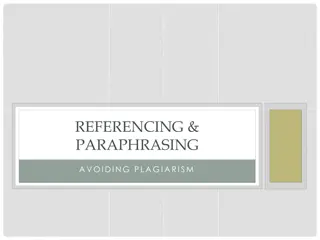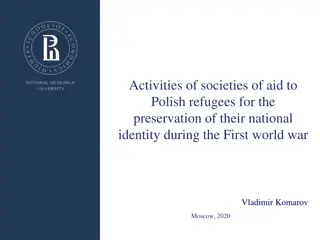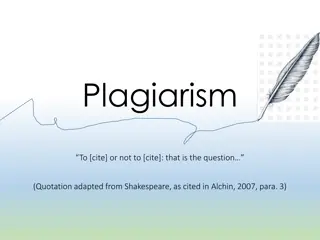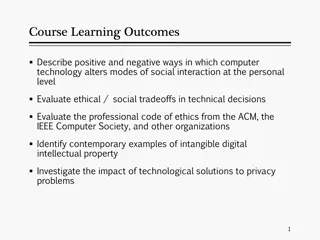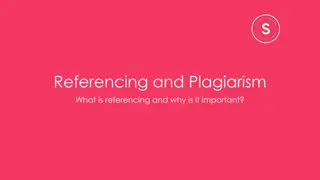Ethics in IT-Configured Societies: Google's Controversy and Plagiarism Detection
In Chapter 3 of 'Ethics in IT-Configured Societies', various scenarios are explored such as Google's filtering practices in China and France, the ethical implications of filtering hate speech and political speech, questioning the need to know if a respondent is human or computer in instant messaging, and the impact of widespread use of plagiarism detection systems. The chapter delves into the role of IT in shaping ethical issues and societal values in information societies.
Download Presentation

Please find below an Image/Link to download the presentation.
The content on the website is provided AS IS for your information and personal use only. It may not be sold, licensed, or shared on other websites without obtaining consent from the author.If you encounter any issues during the download, it is possible that the publisher has removed the file from their server.
You are allowed to download the files provided on this website for personal or commercial use, subject to the condition that they are used lawfully. All files are the property of their respective owners.
The content on the website is provided AS IS for your information and personal use only. It may not be sold, licensed, or shared on other websites without obtaining consent from the author.
E N D
Presentation Transcript
Chapter 3: Ethics in IT- configured societies
Scenarios Scenario 3.1. Google in China: Don t be evil Google( created in 1998 by Serge Brin and Larry Page) is the most popular search engine and is famous for its motto Don t be evil However, Google was criticized for filtering particular content in some countries France: Google filters out anti-Semitic websites to comply with national laws against hate speech
The most important controversy was about Google s entry into China where Google accepted, upon the government s request to filter all references to Taiwan, Tibet As a response, Google said that don t be evil also requires don t be illegal respect the laws of the country of operation
Did Google do anything wrong? Is there an ethical difference between filtering hate speech in France and filtering political speech in China?
Scenario 3.2. Turing doesnt need to know Indira is communicating with Hal by instant messages to obtain information about a software. During the exchange of messages Indira asks herself if Hal is a human or a computer program designed to answer questions What difference does it make whether Hal is human or not?
Scenario 3.3. Turnitin Dot Com A professor at a university decides to run the papers presented by his students through a plagiarism detection system Turnitin.com to compare the papers to the content of the Web and to a database collected by the company Did he do anything wrong? How will widespread use of plagiarism detection system affect university environment?
Introduction: IT-Configured Societies Information society = Society in which IT constitutes a part of the general infrastructure Aim of the chapter: understand the role of IT in configuring ethical issues and shaping social values
Technology as the instrumentation of human action Human action is the central focus of ethics Technology is understood as the instrumentation of human action Connection between ethics and technology Instrumentation through IT of the actions of individuals and organizations in IT-configured societies
Thus, expansion of types of actions that could be done by individuals, especially inconceivable actions before the existence of the technology Sending spam , searching the Web and blogging were inconceivable before the creation of the internet
2 advantages for ethical analysis: Humans are the agents of actions Detect the contribution of instrumentation to the character of human actions
Cyborgs, robots and humans Objections to the account of technology as the instrumentation of human action The account does not take into consideration the agency of technology ( concept developed by STS scholars) i.e. the power of technology in society. It does not recognize the contribution of technology to the world. Counter critic: The account focuses on both contributions of human and technology
The account keeps technology too linked to human action although IT systems have the potential to become autonomous actors. Computer programs, bots and robots will work autonomously and humans will not understand the technology to an extent that we will qualify them as moral agents Counter critic: It is the efforts deployed by human beings that contributed to the development of these so called moral agents
These 2 objections rely on a main idea that technological development keeps going without human intentional activity Technology is human-made and human activity is required for production and development of technology
Suggestion to qualify human beings as cyborgs: human-technology combination Human beings live intertwined with technology, around them and also implanted in their bodies ( heart monitors, replacement joints )
3 Features of IT-Configured Activities Global, Many-to-Many Scope Expansion of the reach of individual communication through the Internet Internet-instrumented communication has a global scope Other means of communication have also a global scope: radio, telephone, television Characteristics of the internet: easy, immediate, affordable and many-to-many communication
Distinctive identity conditions Anonymity on the internet? Not accurate: Monitoring of communications on the internet by service providers Possibility to trace communications by parties that whether have a legal right or the technology to access the information
2 distinctive identity conditions in internet communication Mediation: Internet is mediated through a vast sociotechnical system Variability of the range of available identity conditions A person s physical appearance, voice and facial expressions could be used to identify a person in the offline world but not on the internet So, difference between online and offline identity conditions
Reproducibility A significant aspect of Internet communication Electronic information is easy to copy without: Any loss of quality or value in the reproduction No evidence that electronic information was copied dangerous implications for property rights and crimes
Expansion of the scope of communication in time and place: endurance of messages sent Expansion of the possibilities of disconnection between words and people: copy information by someone and claim to be theirs
IT-configured Domains of life Virtuality, avatars and role-playing games Opportunities for participation in virtual environments where players ( situated anywhere in the world) interact with one another in real time through avatars, characters created by them
Confrontation between the 2ndfeature of IT- configured activities and virtual games: distinctive identity conditions Players don t know each other in the offline world, anonymous Players are pseudonymous since their identity is in their avatar
Scenario 1.1. virtual rape: How should we think about the behavior of Bungle and/or the behavior of the person controlling Bungle? Virtual world virtual punishment of Bungle? Unclear solution Analogy between behavior in virtual environment and harmful images as pornography and violent films in offline world
Offline, individuals are held legally and morally liable for exposing pornography to adults without being warned Bungle harmed the other players by exposing them to a level of unexpected violence Implicitly, players adhere to social norms of behavior similar to the offline ones Thus, the person behind Bungle broke those norms
The administrator of the game had also social norms and the software was set up in a way that each player could control his own avatar Thus, Bungle s controller gained unauthorized access to the system and took control of characters created by others
The player behind Bungle violated the social( thinking of other players) and technological norms( software) of the game No final word is set to solve the virtual rape What is your opinion about it?
Friendship and social networking Instrumentation of friendship in IT-configured societies through social networking sites Can true friendships be formed online? A study has indicated that friendships cannot be created online but existing offline ones can be maintained online
Another study( Cocking and Matthews 2000) has demonstrated that real friendships could not be established and maintained online because Internet biases main aspects of a person s character Internet weakens interactions with people Open debate
In all cases, individuals construct their identities, whether it is offline( clothing, hair cut) or online (social networking sites, information and images posted online ) by using the technical structures Thus, the architecture of a system can make a difference in how one constructs his identity and in the conception that friends have of us
Education and plagiarism detection Existence of issues of plagiarism before the apparition of IT Internet reproducibility and accessibility of information have increased the danger
2 kinds of plagiarism: Cut and paste a text and claiming it as one s own Cut and paste, manipulating a text and claiming it as one s own
Solution: use plagiarism detection systems as Turnitin ( scenario 3.3.) Major issues of these systems Reliability: Some plagiarized papers are not detected whereas some nonplagiarized papers are identified as plagiarized Mistrust between teachers and students: teachers start to suspect a large number of papers mistrust students will not develop maturity
